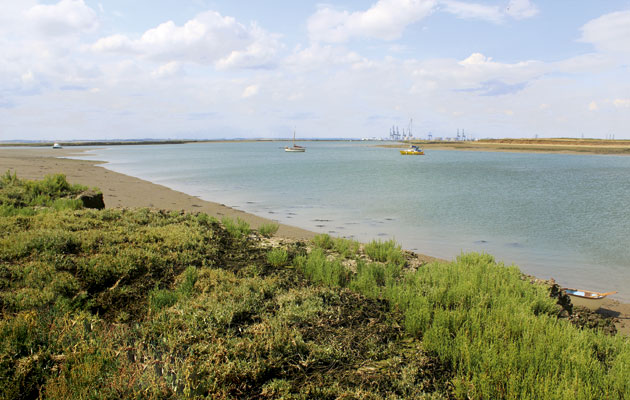Crossing the Thames Estuary is the definitive guide to navigating this stretch of water. A must read for East Coast sailors, says Julia Jones
Crossing the Thames Estuary (3rd edition)
Roger Gaspar
Imray, £29.50
This is a book that does exactly what it says on the cover – and more.
Roger Gaspar has identified 60 routes which enable yachtsmen to cross the Thames Estuary from Ramsgate to the Kent, Essex and Suffolk Rivers (as far as the Deben), in either direction.
‘Routes’ include internal crossings, from the Medway to the Colne, for instance, or from Sea Reach no1 in the Thames to the entrance of the Blackwater or Harwich Harbour to the Swale. 58 waypoints are listed as the nodes of this intricately worked out network.
Every crossing has alternatives, making it easy to select according to expected wind direction, for instance.
‘Rolling routes’ are an additional feature with relevant navigation buoys clearly identified.
This is a boon to someone like me who still feels happiest when there’s a named mark to look out for. Over the years buoys and beacons become familiar friends, as waypoints can never be.
There’s a wealth of additional information about this complex and changeable area, which now includes six windfarms as well as major ports and shipping routes.
Continues below…
The best sailing books & cruising guides of 2021
The best sailing books of 2021? Julia Jones reviews the latest maritime reading
10 best cruises to see working boats in action
Discover the working boats of the UK and Ireland with these 10 cruises recommended by Yachting Monthly experts
Anchorages: Halstow Creek, River Medway
Dick Durham drops anchor in Halstow Creek, a mud-hole once used to create the bricks that built London
Beyond the buoyage: exploring tidal creeks
Will Bruton gets muddy in North Norfolk when he learns the forgotten craft of channel-marking
Gaspar offers recent surveys of the shallowest yacht pinch points such the Ray Sand, the Spitway and the South West Sunk swatchway, showing where the best water can be expected.
He also runs a website www.crossingthethamesestuary.com where information is kept up to date and sailors’ observations welcomed.
The outstanding feature of this third edition are the passage planning tables.
Gaspar has used advances in Excel technology to work through all the data in the tables from the second edition and present them in a completely interactive way.
The timings for each route are laid out according to expected boat speed, spring of neap tides, northerly or southerly direction.
Shaded areas in orange of green show favourable tide streams and there’s a ‘purple point’ calculated for each route suggesting the optimal moment to leave.
Alternative departure times are then shown in 30-minute increments with corresponding ETAs.
This helps sailors whose final destination might be ten miles on from the river entrance or who have tidal constraints on access. All tides are normalised to Sheerness.
For those who open the book and see only a blur of figures (as I did), there is an extremely helpful YouTube video which magicks them into a godsend, saving hours of calculation or screen-peering and making comparison of alternatives a positive pleasure.
If Roger Gaspar could be put in charge of the UK transport network, I’m sure many of the nation’s troubles would be over.
Buy Crossing the Thames Estuary from Amazon (UK)
Buy Crossing the Thames Estuary from Amazon (US)
Buy Crossing the Thames Estuary from Foyles (UK)
Buy Crossing the Thames Estuary from Waterstones (UK)
Note: We may earn a commission when you buy through links on our site, at no extra cost to you. This doesn’t affect our editorial independence.
Enjoyed reading Book Review: Crossing the Thames Estuary?
A subscription to Yachting Monthly magazine costs around 40% less than the cover price.
Print and digital editions are available through Magazines Direct – where you can also find the latest deals.
YM is packed with information to help you get the most from your time on the water.
-
-
-
- Take your seamanship to the next level with tips, advice and skills from our experts
- Impartial in-depth reviews of the latest yachts and equipment
- Cruising guides to help you reach those dream destinations
-
-
Follow us on Facebook, Twitter and Instagram.









